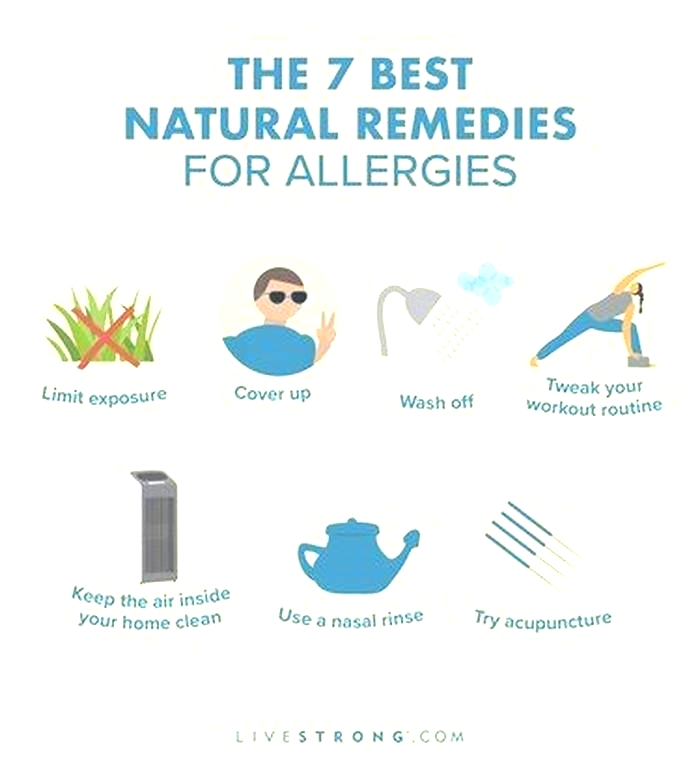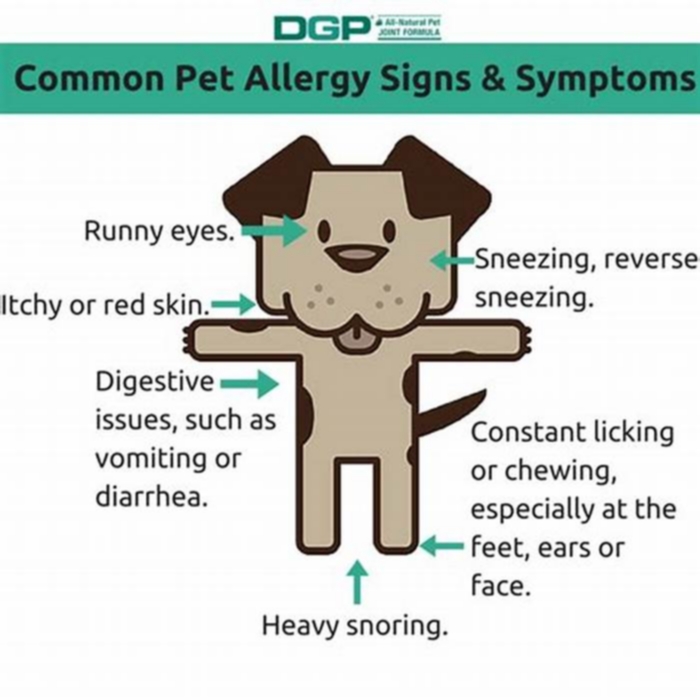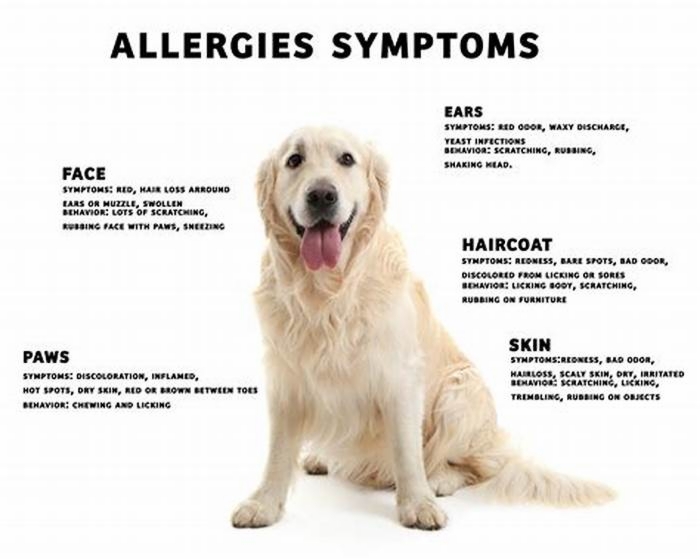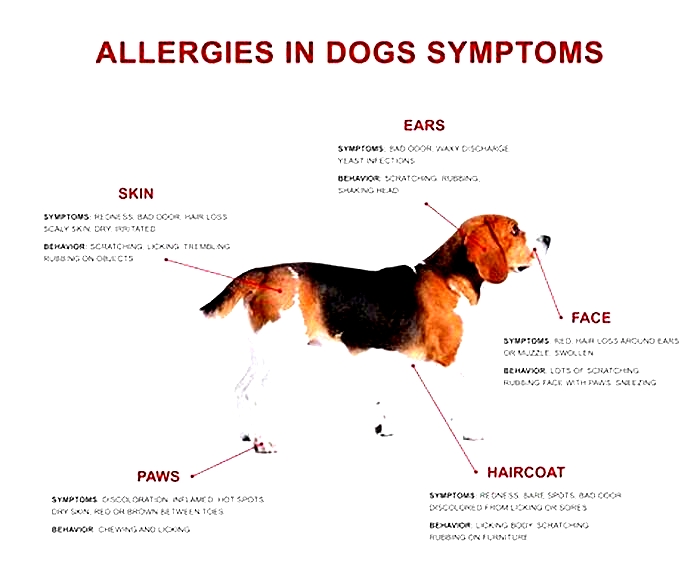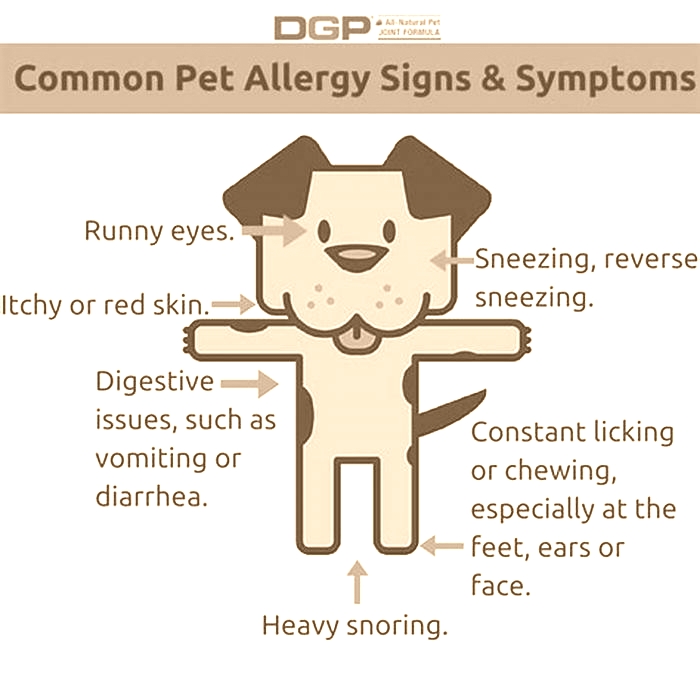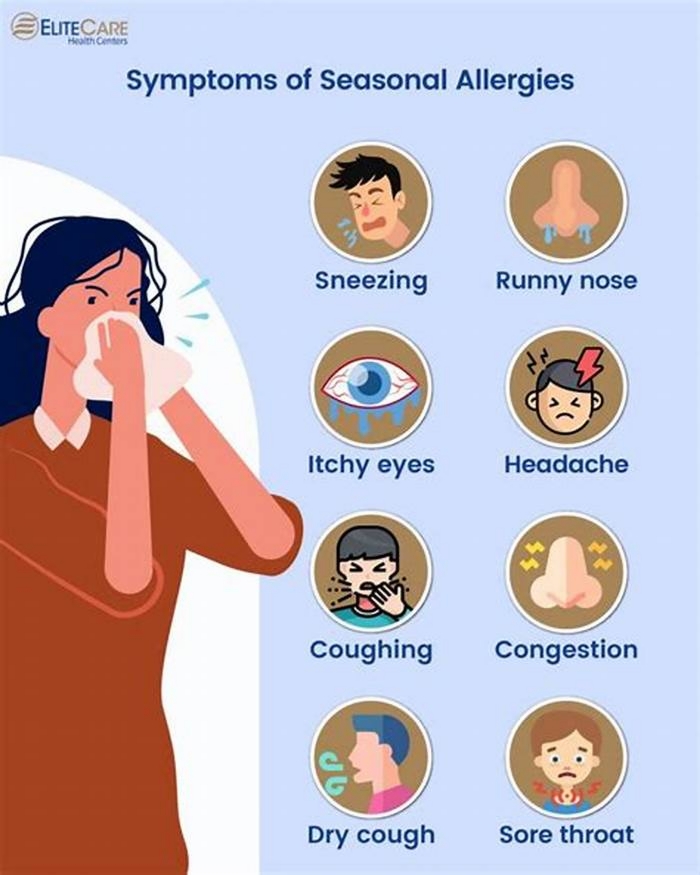What breed of dog is most prone to allergies

10 Breeds That Are Prone to Allergies
When dogs have allergies, the reaction can be extreme. After all, they cant pop a Zyrtec. They cant decide to go for a round of allergy shots. They cant even make the decision to stay out of the field thats causing them to sneeze and scratch.
Its up to us to pay attention and provide relief. Genetics affects the tendency toward allergies as well as where the dog lives and what the dog eats. And a dogs breed also has a part in a predisposition to allergies.
Related:8 Large Breed Dogs That Dont Shed or Make You Sneeze
There are many kinds of allergies that can affect your dog. Atopic dermatitis is an inflammatory, chronic skin disease and is caused by dogs reacting to environmental allergens. Typical sources of atopy allergies are pollen, molds, ragweed, dust mites, cigarette smoke, feathers, cleaning products, and even perfume. Allergies that result from something your dog has eaten are food allergies. Theres also allergies from flea bites called flea allergy dermatitis and contact allergies from things like carpet, plastics, and fabrics.
How Do You Know if Your Dog Has Allergies?
In order to help your dog, you have to recognize the symptoms that indicate hes suffering from allergies. These include:
- Increased scratching
- Constant licking
- Itchy, red, moist skin
- Itch, runny eyes
- Chewing at the feet
- Scratching or rubbing the face
- Itchy back or base of tail
- Sneezing
- Diarrhea
- Vomiting
- Hair loss
- Hot spots
- Ear infections
If your dog has any of these symptoms, start by taking him to your veterinarian. Allergy testing is similar to tests done on humans: substances are introduced into the skin just below the surface to see if theres a reaction. Food allergies are tested by giving your dog a prescription diet for a few months to rid the system of allergens and then reintroducing foods to see which one she reacts to.
Treatment for Allergies
The best treatment for allergies is prevention. Once you figure out what the offending culprit is, remove it from your dogs environment or diet.
For flea allergies, be rigorous about flea control. Fleas can actually kill your dog if left untreated because the loss of blood leads to anemia. If your dog is allergic to indoor allergens like dust, wash his bed weekly and vacuum your home at least twice a week. Bathing once a week will remove environmental allergens and pollen from his skin. (Prescription shampoos can cut down on bathing if it dries out your dogs skin.) Some dogs may be helped by antihistamines like Benadryl or Chlor-Trimeton, but be sure to consult your veterinarian for dosage.
Purebred dogs are at greater risk for allergies than mixed breed dogs, though mixed breed dogs can have allergies, too.
Here are 10 breeds that are prone to allergies:
1. American Pit Bull Terrier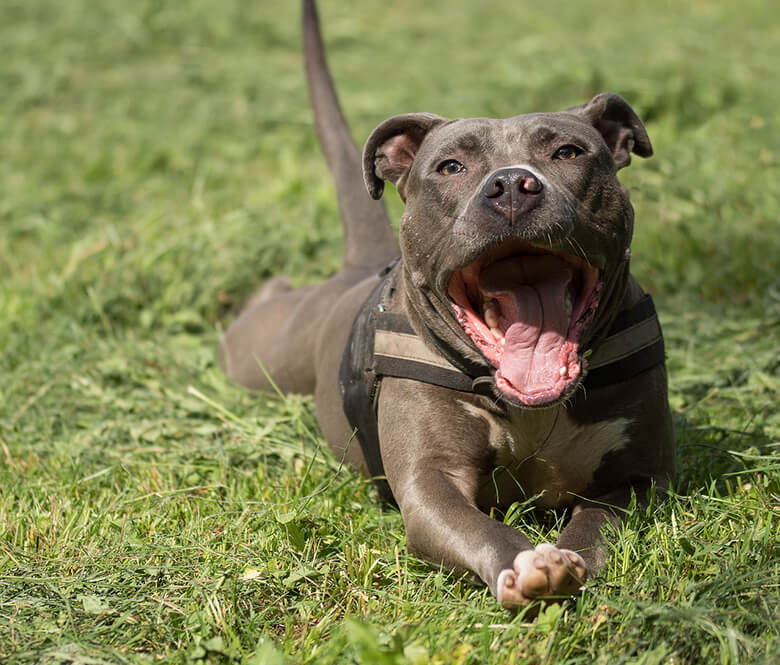
Allergies are common in the American Pit Bull Terrier, along with other stocky, square-head dogs, including the American Staffordshire Terrier, Staffordshire Bull Terrier, American Bulldog and American Bully. Allergies are often caused by environmental allergens including fleas, pollen, grass, and dust. Common food allergens include beef, wheat, rice, and corn.
2. Bichon Frise
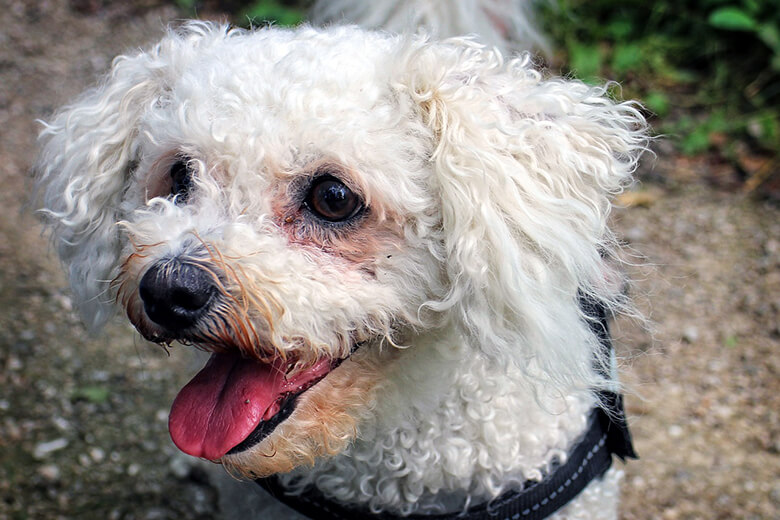
The most common allergies for the Bichon Frise are contact allergies that cause skin problems and food allergies. They are also sensitive to flea bites and airborne allergens from grass, flowers, trees, and dust.
3. Boxer
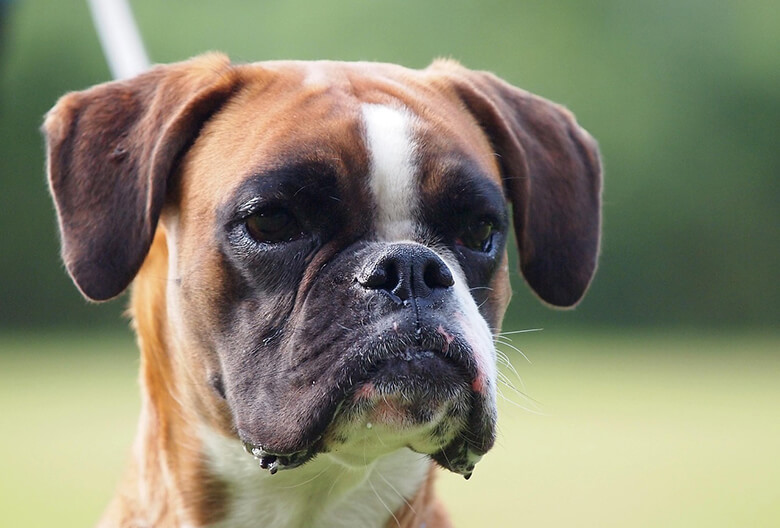
Watch out for environmental allergies that affect their skin and food allergies. Boxers are particularly sensitive to dog food with a high grain content, including corn or wheat. Allergies from trees, weeds, pollen, and dust can affect them year-round.
4. Brussels Griffon

Skin allergies are at the top of the list for Brussels Griffon. Areas most affected are the feet, belly, folds of the skin, and ears. Watch for licking of the paws, rubbing the face, and frequent ear infections. Allergies manifest early, from 1 to 3 years.
5. Bull Terrier
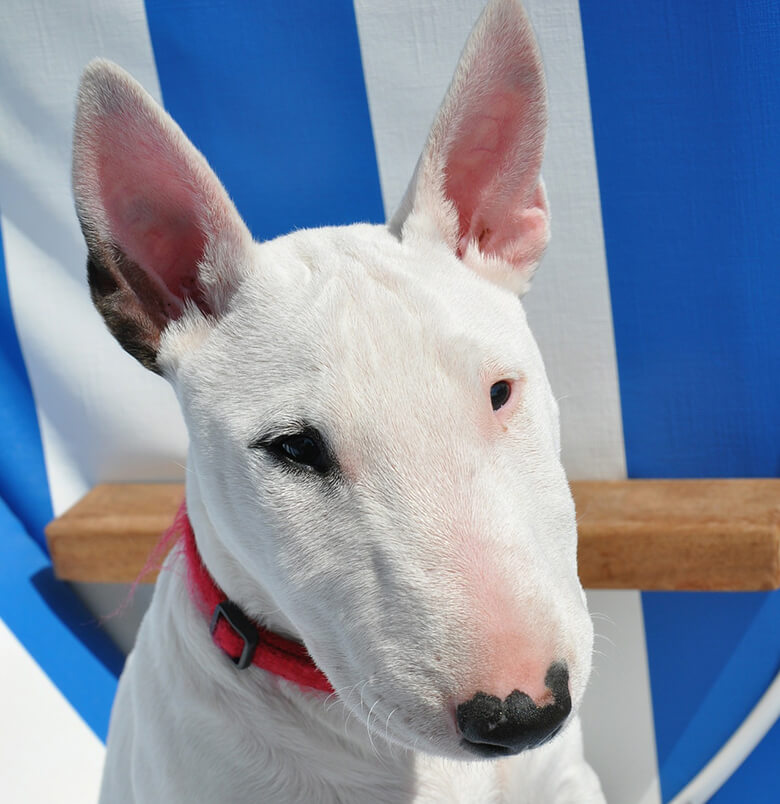
Sensitive skin, contact allergies, and allergens inhaled such as detergents, chemicals, pollen, dust, and mildew are the most common allergies for Bull Terriers. An allergic skin disease called atopic dermatitis that causes itching, irritation, infection, and discomfort is prevalent.
6. Cocker Spaniel

The three most common allergies are food, contact, and inhalant allergies. Food allergies manifest typically as itching in the ears and feet of Cocker Spaniels. Allergies to typical inhalants like pollen and materials like wool, plastic, copper, synthetics, and sand are common.
7. German Shepherd
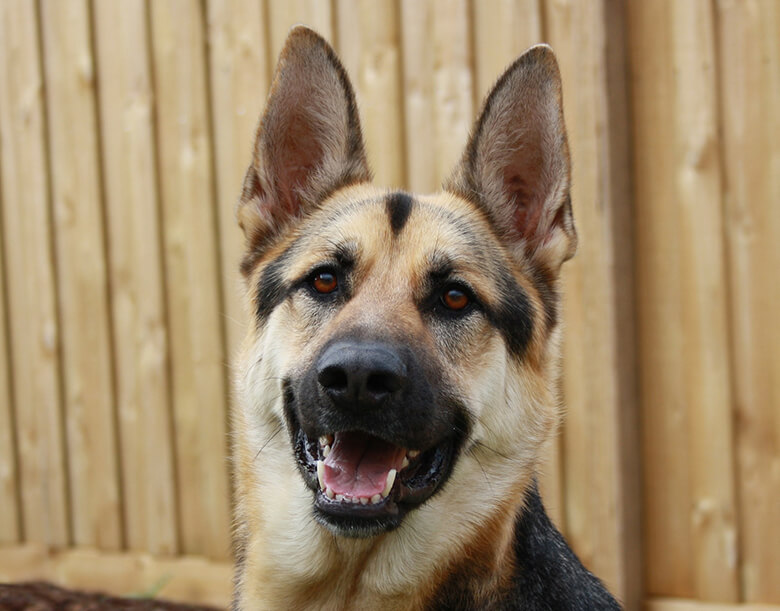
They are more prone to food and environmental allergies, while the short-haired German Shepherd suffers more from skin contact allergies. Skin allergies are triggered by fleas, food allergies (including beef, chicken, corn, soy, dairy and wheat), and pollen.
Related:5 Medium-Sized Dog Breeds Who Are a Blessing for Those With Allergies
8. Golden Retriever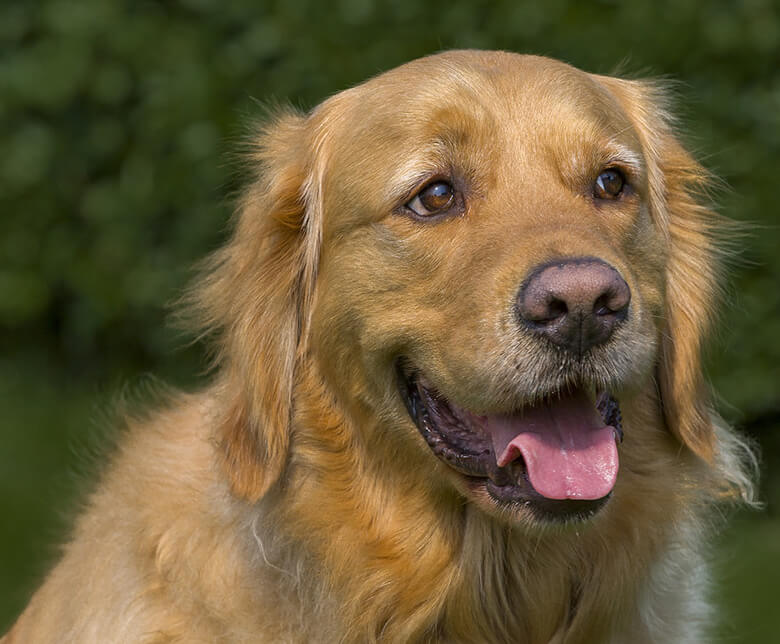
There are four major forms of allergies for the Golden Retriever: flea, canine atopic dermatitis, food, and contact. Irritants that affect the skin include pollen, dust, fleas, mold, grasses, and weeds. Common food allergies are soy, wheat, dairy, beef, and some poultry.
9. Labrador Retriever
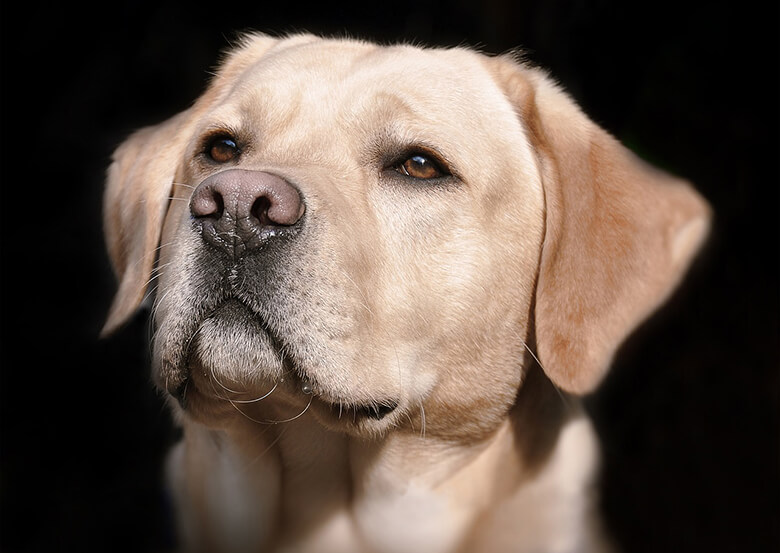
Common allergies for Labrador Retrievers include food, flea, contact, bacterial, and inhalant allergies that manifest most frequently as skin problems the skin. Food allergies are triggered by common dog food ingredients like soy, eggs, beef, corn, fish, and chicken.
10. Maltese
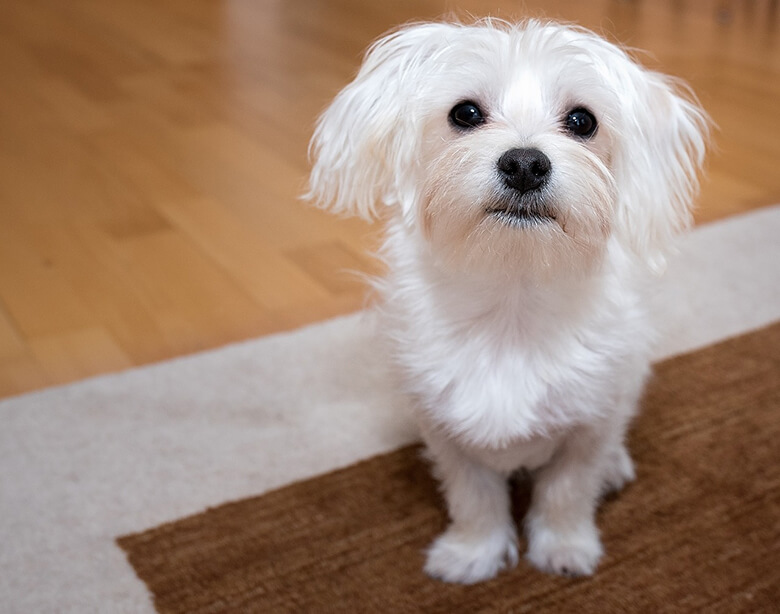
The top signs of allergies in the Maltese are itching, rash or irritated skin, thinning hair, wheezing, and eye, nose or ear issues. Food allergies can also manifest as gastrointestinal problems. Contact allergies can be to fabric (beds) and plastic (bowls).
Related: Our Favorite Products to Help Dogs Who Suffer From Summer Allergies
10 Dog Breeds Prone to Skin Problems & Conditions: Signs & Care
The information is current and up-to-date in accordance with the latest veterinarian research.
Learn moreHaving a dog as part of your life is a privilege. When we take on this fun and loving responsibility we find ourselves wanting the best for our fur babies. When you see your pooch suffering, you instantly want to help. Unfortunately, for many dog breeds out there, dealing with skin issues is par for the course. Many breeds are more susceptible to skin issues such as infections, allergies, and rashes. When we bring a dog into our homes, its not uncommon that we dont do a lot of research. Pet owners may not know the dog theyve chosen has these tendencies.
While every dog breed has the potential to suffer from food, environmental, and skin allergies along with infections, heres a look at a few that are more prone than others. This will help you be better prepared if your pooch presents with an issue so you can get them the care they need.

The 10 Dog Breeds Prone to Skin Problems
1. Chinese Shar-Pei

The Chinese Shar-Pei is a wrinkly wonder of a dog breed that people around the world simply adore. Unfortunately, they also find themselves on our list of dogs that are prone to having skin problems, like many dogs with short coats. The skin of a Shar-Pei folds over on itself. This means small hairs on one side are poking the other. This often causes skin irritation. While this issue is enough in itself, Chinese Shar-Peis can also deal with allergies which can exacerbate this irritation.
2. American Bulldog
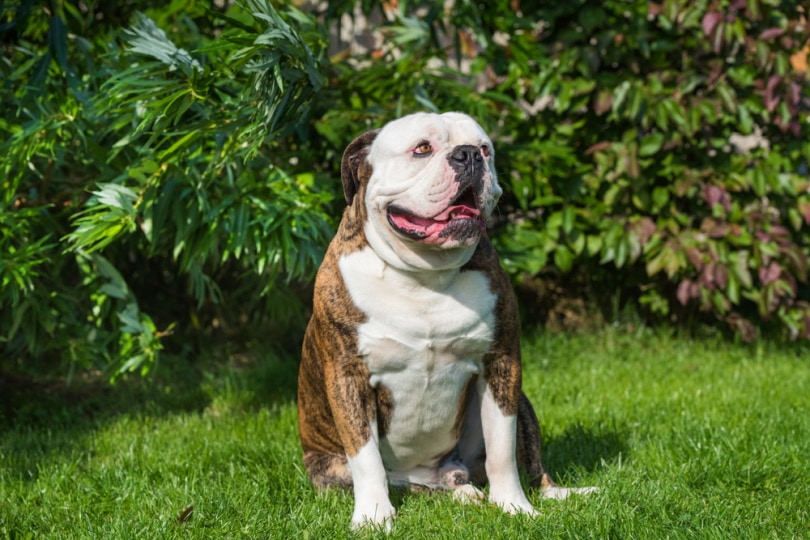
American Bulldogs are common in almost every neighborhood. These dogs are fiercely loyal and full of energy. They are also prone to allergies. These allergies can present as both environmental or food allergies. Either way, they can be damaging to your Bulldogs skin. This breed is also susceptible to a genetic condition called ichthyosiform dermatoses. When this condition is present, itchy, redness, and scaliness of the groin, armpit, and belly are possible. Dogs with ichthyosiform dermatoses, or fish scale disease, can also cause yeast, ear, and between-paw infections.
3. Standard Poodle
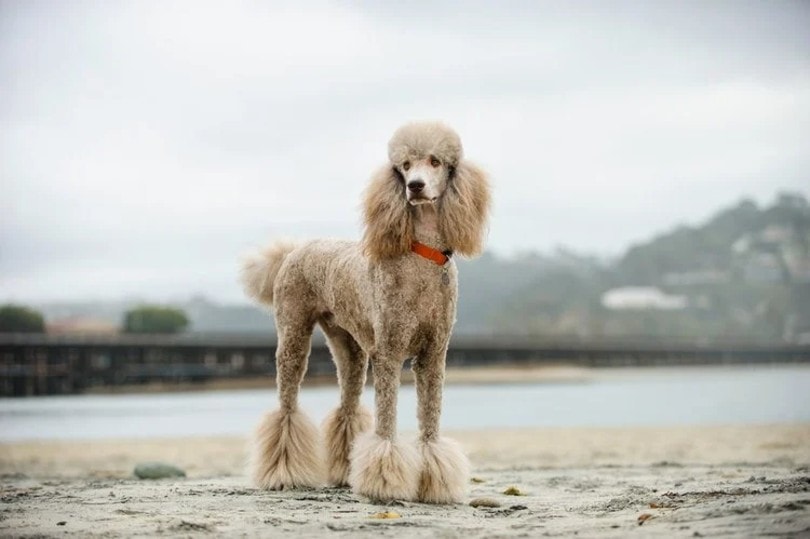
Have you ever seen a standard Poodle that looks as though moths have been munching on its fur? If you answered yes to this question, the Poodle most likely has granulomatous sebaceous adenitis. This condition causes hair loss due to its effect on the dogs oil glands. Secondary infections are also quite likely due to this condition. Unfortunately, there are no treatments for granulomatous sebaceous adenitis that are guaranteed. However, your veterinarian can make suggestions on things that can help.
4. English Bulldog
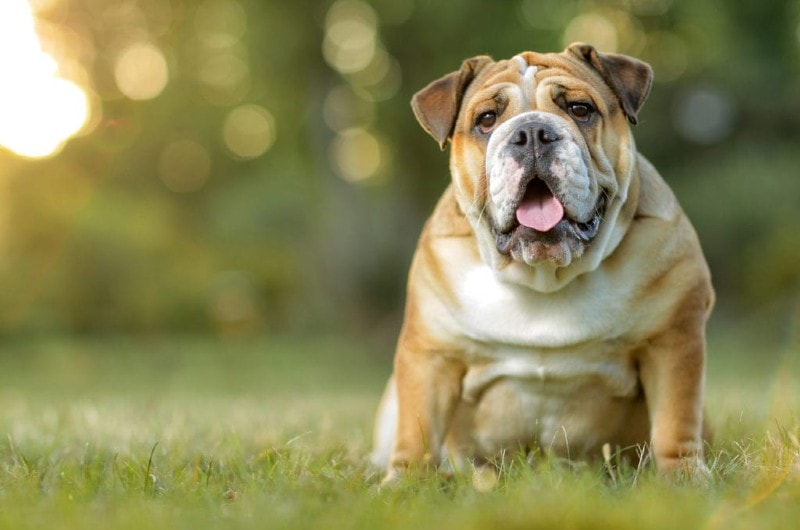
English Bulldogs are easily one of the coolest dog breeds around, but unfortunately, they are also prone to several skin problems. The adorable folds everyone loves can also play host to disease and infection. Bacterial and yeast infections are quite common in this breed if special care and cleaning of the folds arent followed. Painful tumors are also quite common in young English Bulldogs. While many of the tumors are benign and go away on their own, it is possible for bigger issues to develop like bleeding, continued growth, pain, and infection.
5. Labrador Retriever
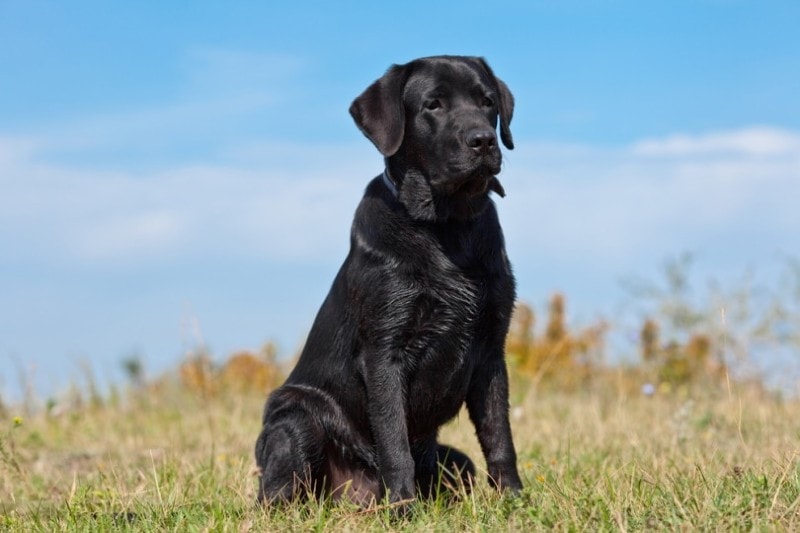
Labrador Retrievers are one of the most popular dog breeds in the world. They are also a breed that is prone to allergies, both environmental and food-related. Of course, these allergies can lead to other skin issues. If your Lab is showing signs of an allergy, its time to visit your veterinarian to determine what is causing the issue and work out a plan to help your pooch feel better.
6. American Pitbull Terrier
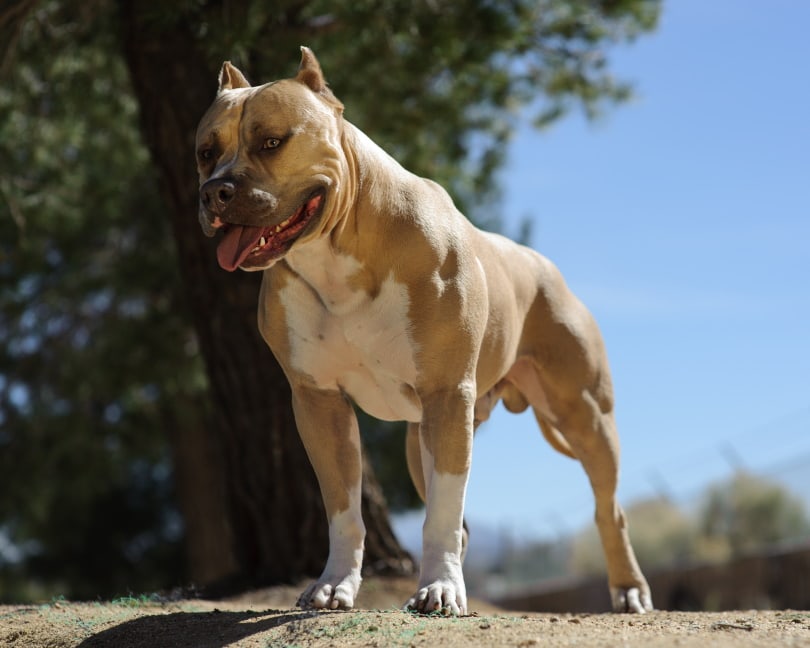
Known as a fierce dog that is extremely loyal, the American Pitbull Terrier also has a weak immune system. This weakened system can lead to different types of skin infections and even mites that affect the hair follicles. To help battle these issues, make sure your American Pitbull Terrier is eating a healthy diet and receives all their required vaccinations.
7. Spaniel
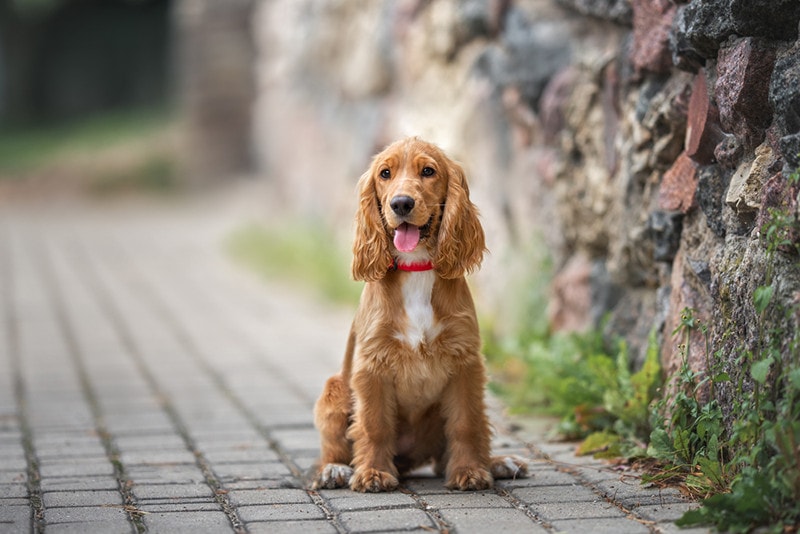
If you have a Spaniel, youre accustomed to the weighty, floppy ears and jowls. While these attributes are cute and endearing, they are also the perfect places for infections. Yeast infections are common in this breed due to the warm, humid areas under their weighty ears. Youll also find that lip infections, thanks to bacteria growth in the folds, is another big issue for this breed. Like other breeds, Spaniels are also susceptible to environmental and food allergies with pollen, plastic, sand, and wool being particular issues.
8. Doberman Pinscher
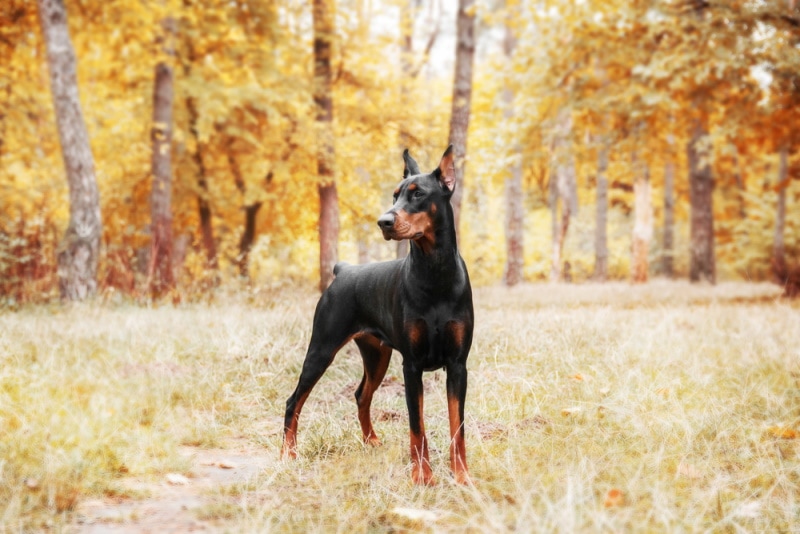
Dobermans are known as a breed that will protect their humans at all costs. They are also known for dealing with hypothyroidism. While it may not happen to every dog dealing with this condition, hypothyroidism can cause dry, flaky skin or a thinning coat. Some dogs experiencing this disease are also more likely to get secondary skin infections that require treatment.
9. Bichon Frise
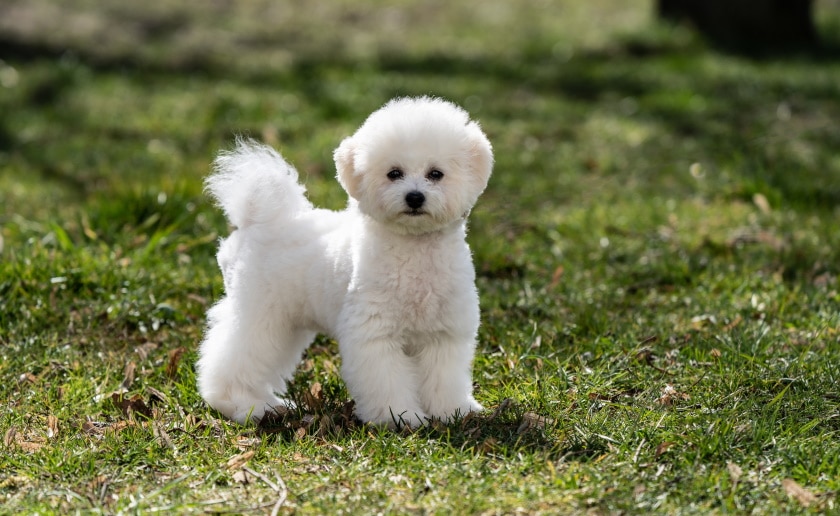
When discussing skin problems, the Bichon Frise comes to mind thanks to the breeds issues with insects, especially fleas. All dogs itch when they are bitten by a flea, but for the Bichon Frise, that itch can be unrelenting. It can also cause skin irritation. Your dogs scratching may also damage the skin which is why protecting your pooch against flea infestation is so important.
10. German Shepherds
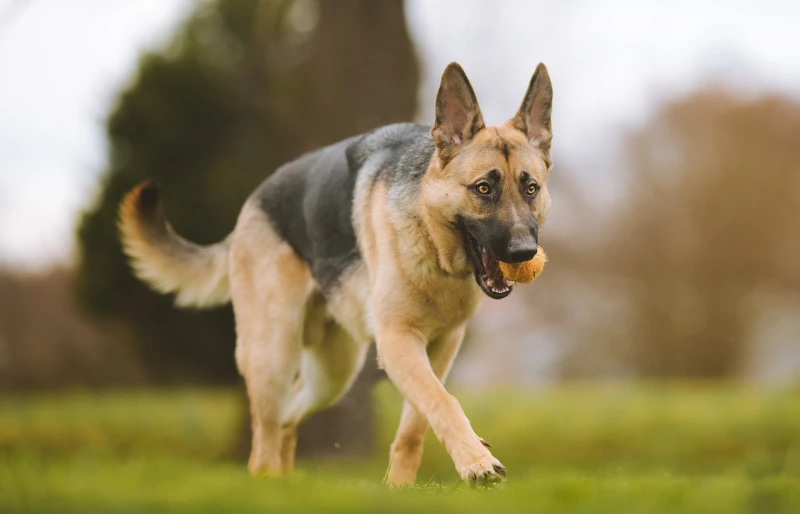
Looking at the powerful German Shepherd can leave many of us to think they are impervious to things. Thats not the case. Even the mighty German Shepherd can have skin problems. Like the Bichon Frise, this breed can become very itchy and red when dealing with fleas. Youll also find that they are prone to food allergies.

Final Thoughts
While any dog breed can potentially have skin problems, this look at a few of the most notorious can help owners of these breeds be on the lookout. If you notice anything strange about your dogs skin, whether it be redness, swelling, or flakiness, reach out to your veterinarian. They can help you determine whats causing the issue and find a suitable treatment to help your pooch feel better quickly.
Featured Image Credit: KatrinaToompere, Shutterstock
Best and Worst Dog Breeds for People With Allergies
What do you do when you love dogs, but you or a family member is allergic? You do what many people do: Get a dog breed touted as hypoallergenic. Theyre the best types of dogs for people with allergies because they tend to shed less than other breeds.
Pet hair or pet dander is a common cause of allergic rhinitis, a chronic disease that affects as much as 30 percent of the U.S. population, according to theWorld Allergy Organization. Commonly known as hay fever, allergic rhinitis happens when the body overreacts to something that does not cause a problem in other people.
Most people are not actually allergic to dog hair. Rather, theyre allergic to dander (flakes on the dogs skin) or saliva. Hair does have something to do with it, though: Sometimes other indoor allergens like dust, or outdoor allergens like grass or tree pollen, can build up on a dogs furry coat and trigger allergy symptomslike sneezing, congestion, nasal swelling, asthma, andrashes. Many people with dog allergies complain about red, itchy eyes.
Tips to Prevent Dog Allergies
If you already have a dog, here are a few tips to prevent pet allergies:
- Keep your dog clean and bathe it weekly in warm water. This may reduce the amount of dog dander and dog saliva deposited throughout your home.
- Get a groomer to bathe your dog so youre not exposed to the allergens.
- Wash the dogs bedding weekly to remove excess dander.
- Use air purifiers throughout your home and avoid furnishings that collect allergens, like cloth curtains or carpets.
- Keep the dog out of the bedroom and off the bed during sleep.
- Keep the dog outside if possible. It may take weeks or months before your house is free of pet allergens.
If youre on the hunt for a hypoallergenic dog that wont leave you watery-eyed, youll need to do your research and perhaps an in-home test-drive to make sure your new pup doesnt trigger an allergy orasthma attack.
Dont go straight for the breeds of dogs with shorter coats, and dont count out shaggy pups. There are many types of hypoallergenic dogs some with more hair, some with less.
Heres some more information on the best (and worst) breeds for people with dog allergies.



